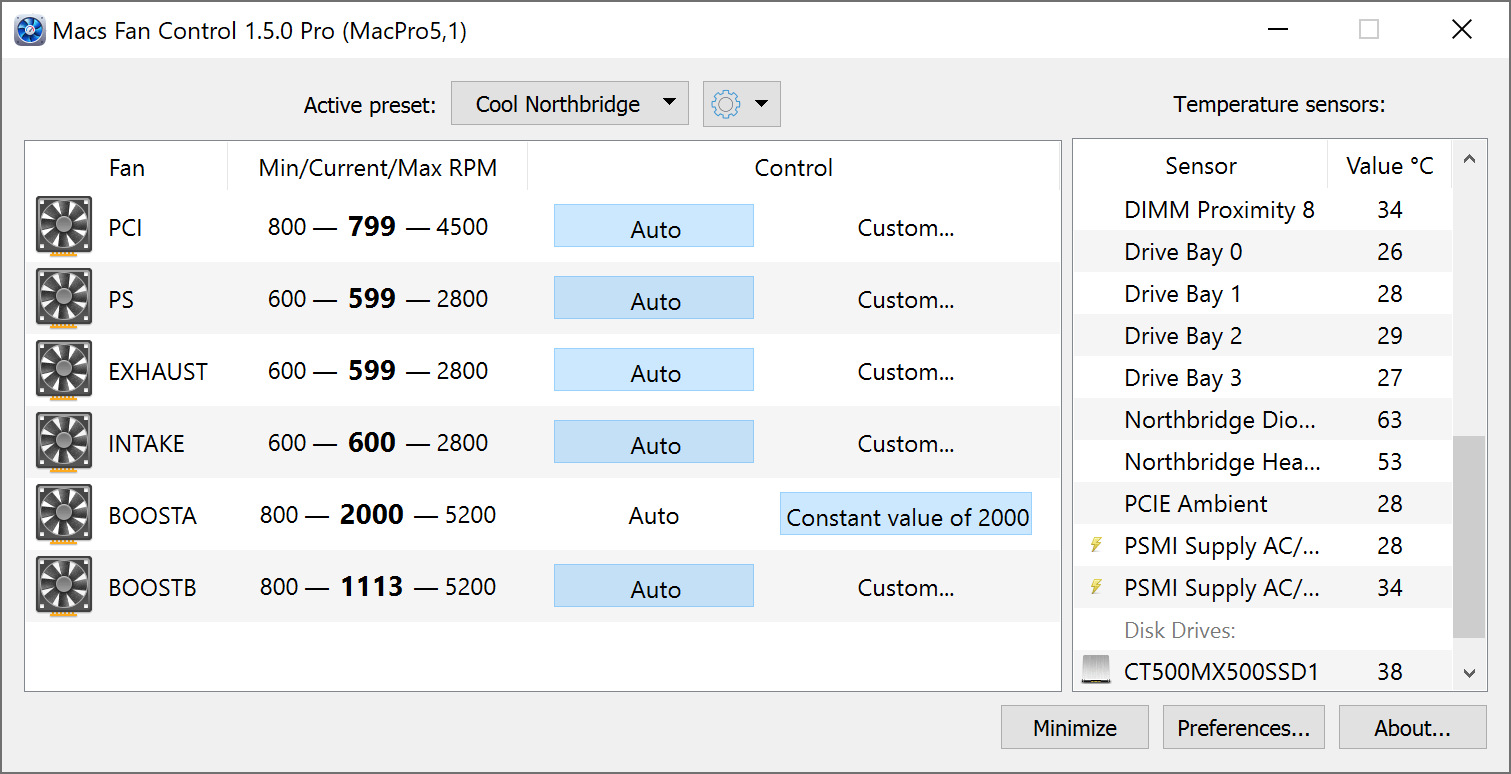

- #MACS FAN CONTROL ALTERNATIVE HOW TO#
- #MACS FAN CONTROL ALTERNATIVE MANUAL#
- #MACS FAN CONTROL ALTERNATIVE PC#
For Simple, Built-In Controls: Check Your BIOS

Got it? Alright, with that, let’s talk about the different ways you can control those fans.

Having trouble understanding all that? Here it is in flowchart form: In addition, voltage control isn’t quite as smooth as PWM-but it’ll get the job done.Īnd, to make matters even more confusing, you can connect 3-pin fans to 4-pin sockets and vice-versa, as shown above-you just won’t be able to use PWM control.
#MACS FAN CONTROL ALTERNATIVE MANUAL#
Not all motherboards support this, so you’ll probably have to check your motherboard’s manual or search the web for answers. If your motherboard only has 3-pin connections, though, you can sometimes control the fans by changing the voltage supplied to the fan. Having a 4-pin fan connected to a 4-pin socket is ideal, since 4-pin connections allow your fans to be controlled through pulse-width modulation, or PWM. In addition, your motherboard can either have 3-pin sockets or 4-pin sockets (or both!). Motherboard-connected fans come in two varieties: those with 3-pin cables, and those with 4-pin cables.

If you can connect them to your motherboard, however, you may have options. If they’re connected to the power supply (usually through a Molex connector), there’s no way to control them through software-you’d have to hook them up to a hardware fan controller. The fans in your computer can get power in one of two ways: From the motherboard, or directly from your computer’s power supply.
#MACS FAN CONTROL ALTERNATIVE PC#
The Different Ways Fans Connect to Your PC This is especially common (and necessary!) with home-built computers, but can sometimes work on pre-built desktops and laptops as well-though your mileage may vary. Depending on your computer, you may be able to change how hard and how often the fans run to cool down your PC. If your computer is constantly working hard due to a runaway program, its fans are going to run much more often.īut let’s say you’re still not satisfied. Open up Windows’ Task Manager and see if there are any programs working hard that shouldn’t be.
#MACS FAN CONTROL ALTERNATIVE HOW TO#
RELATED: How to Use the New Task Manager in Windows 8 or 10 If you’re using a laptop, try to keep it on a flat surface where the rubber feet can allow air to pass under it, rather than using it on top of a blanket or mattress. If you’re using a desktop, make sure there’s some space around the case, not pushed up against a wall or in a closed cupboard.


 0 kommentar(er)
0 kommentar(er)
